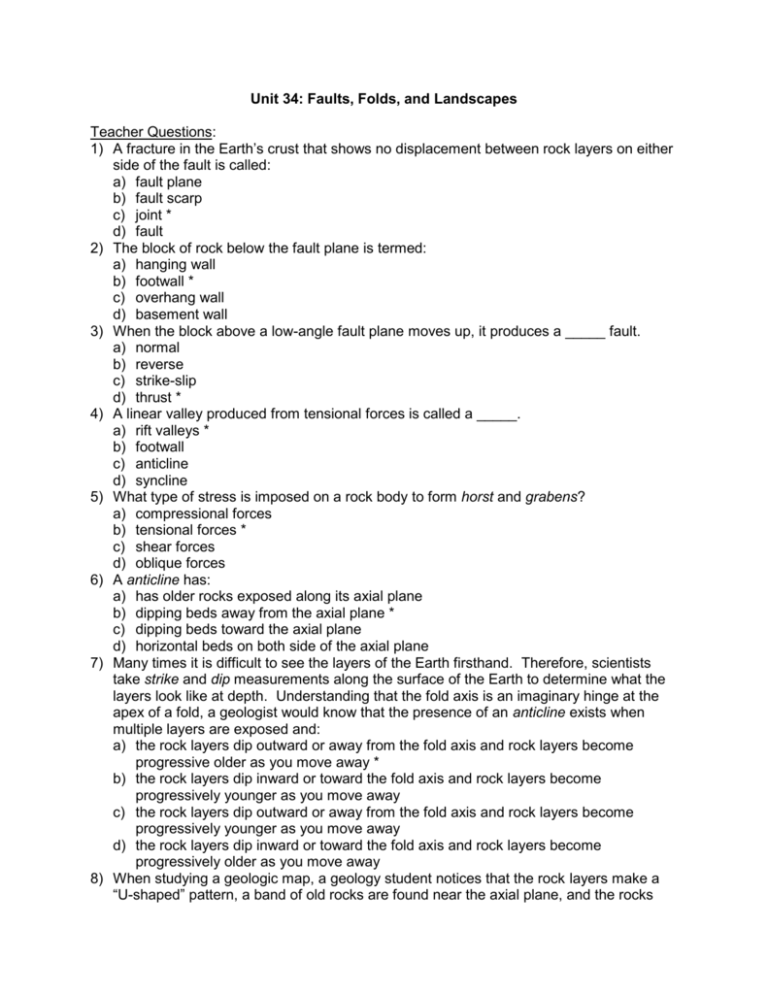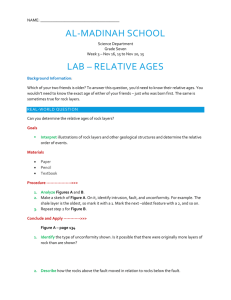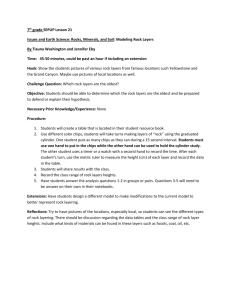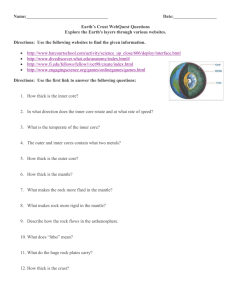34 - Cal State LA - Instructional Web Server
advertisement

Unit 34: Faults, Folds, and Landscapes Teacher Questions: 1) A fracture in the Earth’s crust that shows no displacement between rock layers on either side of the fault is called: a) fault plane b) fault scarp c) joint * d) fault 2) The block of rock below the fault plane is termed: a) hanging wall b) footwall * c) overhang wall d) basement wall 3) When the block above a low-angle fault plane moves up, it produces a _____ fault. a) normal b) reverse c) strike-slip d) thrust * 4) A linear valley produced from tensional forces is called a _____. a) rift valleys * b) footwall c) anticline d) syncline 5) What type of stress is imposed on a rock body to form horst and grabens? a) compressional forces b) tensional forces * c) shear forces d) oblique forces 6) A anticline has: a) has older rocks exposed along its axial plane b) dipping beds away from the axial plane * c) dipping beds toward the axial plane d) horizontal beds on both side of the axial plane 7) Many times it is difficult to see the layers of the Earth firsthand. Therefore, scientists take strike and dip measurements along the surface of the Earth to determine what the layers look like at depth. Understanding that the fold axis is an imaginary hinge at the apex of a fold, a geologist would know that the presence of an anticline exists when multiple layers are exposed and: a) the rock layers dip outward or away from the fold axis and rock layers become progressive older as you move away * b) the rock layers dip inward or toward the fold axis and rock layers become progressively younger as you move away c) the rock layers dip outward or away from the fold axis and rock layers become progressively younger as you move away d) the rock layers dip inward or toward the fold axis and rock layers become progressively older as you move away 8) When studying a geologic map, a geology student notices that the rock layers make a “U-shaped” pattern, a band of old rocks are found near the axial plane, and the rocks become progressively younger tracing the layers from the plane outward. The geology student concludes he is looking at a: a) alternating synclines and anticlines b) plunging syncline c) plunging anticline * d) cannot tell with the evidence provided 9) Field evidence that may help to determine if the beds are overturned would be: a) beds on opposite sides of the axial plane are dipping in the same direction * b) beds alternate between dipping toward the axial plane and then dipping away from the adjacent axial plane c) beds are horizontal d) impossible to determine 10) Regional deformation may also be termed all of the following EXCEPT: a) epeirogeny b) orogeny * c) diastrophism d) crustal warping





